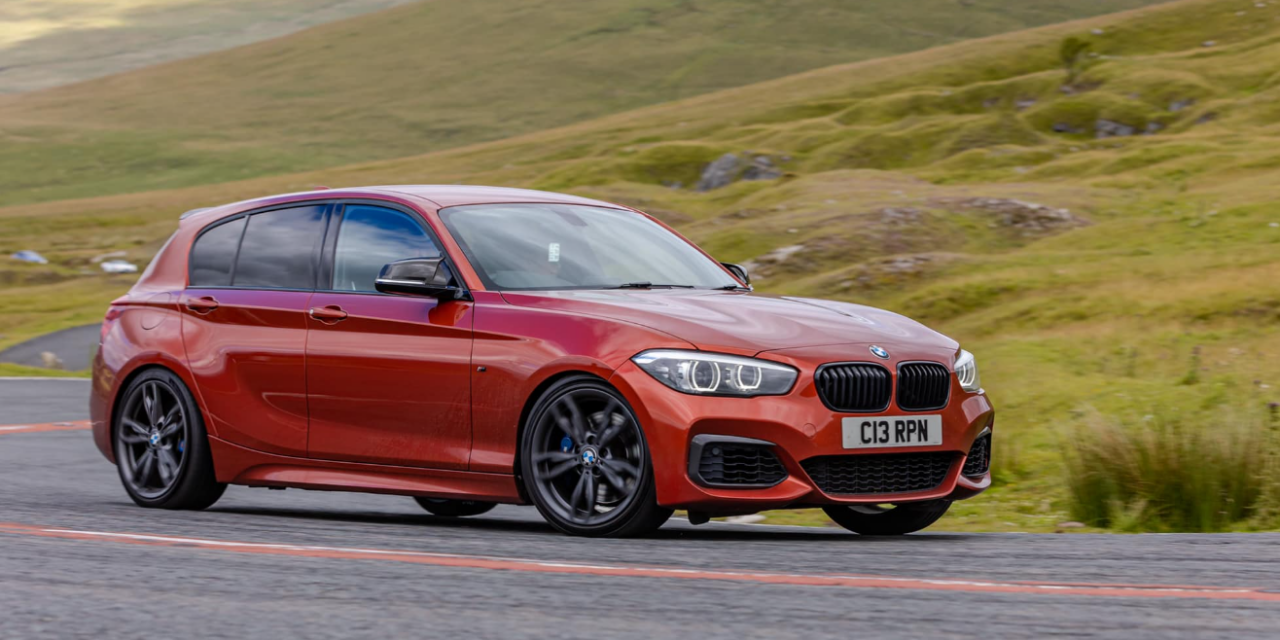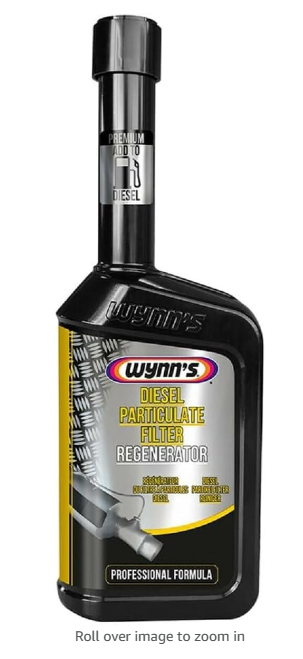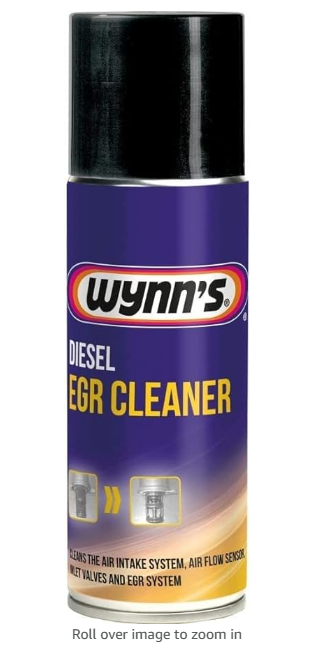The BMW M140i is a standout model within BMW’s 1 Series, celebrated for its combination of compact practicality and exhilarating performance. Introduced as a successor to the M135i, the M140i boasts a 3.0-liter turbocharged inline-six engine, delivering an impressive 335 horsepower and 369 lb-ft of torque. This power, paired with rear-wheel drive, makes it one of the rare hatchbacks to provide such dynamic, sports car-like handling. With an available 8-speed automatic or a 6-speed manual transmission, the car caters to both enthusiasts and those seeking everyday ease.
Aesthetically, the M140i maintains the sleek, understated design typical of the 1 Series but incorporates performance-oriented details that distinguish it. Its aggressive front bumper, sporty side skirts, and unique alloy wheels enhance its athletic stance. Inside, the car combines luxury and functionality, with high-quality materials, ergonomic seating, and an intuitive infotainment system. Optional features such as adaptive suspension, upgraded Harman Kardon sound system, and leather upholstery further elevate the driving experience, creating a balance of comfort and performance.
As a versatile hot hatch, the BMW M140i appeals to those who value driving pleasure without compromising practicality. Its compact dimensions make it ideal for city driving, yet its spirited engine ensures a thrilling experience on open roads. Despite its high performance, the M140i manages respectable fuel efficiency, making it a viable option for everyday use. Overall, it embodies BMW’s commitment to engineering excellence, blending power, precision, and premium design in a compact package.
Brochure Download
Check out the official F20 1 Series brochure from the following page. Jump to page 15 for the M140i
Performance
The BMW M140i is renowned for its impressive performance, driven by a 3.0-liter turbocharged inline-six engine that delivers 335 horsepower and 369 lb-ft of torque. Its rear-wheel drive configuration and choice of either a 6-speed manual or 8-speed automatic transmission provide exceptional control and a dynamic driving experience. This hatchback accelerates from 0 to 60 mph in just 4.6 seconds, showcasing its capability as a sporty and powerful vehicle. Additionally, the M140i strikes a balance between spirited performance and everyday practicality, offering commendable fuel efficiency for its class.
The BMW M140i is equipped with a 3.0-liter turbocharged inline-six engine, part of BMW’s B58 engine family. This powerhouse delivers 335 horsepower (340 PS) and 369 lb-ft (500 Nm) of torque. The engine operates with a compression ratio of 11.0:1 and utilizes direct fuel injection for optimal performance and efficiency. With its aluminum block and head, it strikes a balance between strength and weight reduction. Paired with a twin-scroll turbocharger and an intercooler, the M140i’s engine offers responsive acceleration and excellent power delivery across a wide range of speeds.
Engine Specs
| Engine type | Inline 6 turbo (B58) |
| Displacement | 3.0 l (183 ci) |
| Power | 340 ps (335 bhp / 250 kw) |
| Torque | 500 Nm (369 lb-ft) |
| Power / liter | 113 ps (112 hp) |
| Power / weight | 223 ps (220 bhp) / t |
| Torque / weight | 329 Nm (242 lb-ft) / t |
| Efficiency | 27 PS per l/100 km |
| Transmission | 8 Speed Auto / 6sp manual |
| Layout | front engine, rear wheel drive |
Performance Figures
| 0-60 MPH | 4.6 seconds |
| Top Speed | 155 MPH (electronically limited) |
| Quarter Mile | 340 ps 12.1 Seconds @ 115 MPH |
The BMW B58
The BMW B58 engine is a turbocharged 3.0-liter inline-six powerhouse that has earned widespread acclaim for its performance, reliability, and tunability. Introduced in 2015 as a successor to the N55 engine, the B58 features a closed-deck aluminum block design, which enhances durability and allows for higher boost pressures. It incorporates advanced technologies such as direct fuel injection, Valvetronic variable valve lift, and Double VANOS variable valve timing, ensuring efficient and responsive performance.
The engine produces between 322 and 382 horsepower and 332 to 369 lb-ft of torque in its standard configurations, depending on the model. It is equipped with a twin-scroll turbocharger and an integrated water-to-air intercooler, which reduce turbo lag and optimize power delivery. The B58 has a compression ratio of 11.0:1 and a redline of 7,000 rpm, making it both powerful and smooth.
The B58 engine is highly versatile and is used in various BMW models, including the 3 Series, 4 Series, 5 Series, and even non-BMW vehicles like the Toyota Supra. Its tunability has made it a favorite among enthusiasts, with simple upgrades allowing it to achieve over 500 horsepower.
Variants
The BMW M140i, available in both European and UK markets, is a rear-wheel-drive hot hatch that stands out for its performance and practicality. In the UK, the M140i was offered with a “Shadow Edition” variant, which included additional features like darkened exterior accents, upgraded Harman Kardon sound system, and exclusive alloy wheels. Both markets enjoyed the same powerful 3.0-liter turbocharged inline-six engine, delivering 335 horsepower and 369 lb-ft of torque.
The European variant shares the same mechanical specifications but may differ slightly in available trims and optional features due to regional preferences and regulations. For example, certain interior or exterior color options might be unique to specific markets.
Facelift (LCI)
The facelifted BMW M140i, part of the F20 LCI (Life Cycle Impulse) generation, introduced several updates to enhance its performance, design, and features. Here’s what made the facelifted M140i stand out:
- Engine Upgrade: The facelift brought the powerful B58 3.0-liter inline-six turbocharged engine, delivering 335 horsepower and 369 lb-ft of torque. This engine replaced the N55 in the previous M135i, offering improved performance and efficiency.
- Exterior Design: The facelift included revised front and rear bumpers, updated LED headlights, and taillights, giving the car a more modern and aggressive appearance. The Shadow Edition added darkened accents for an even sportier look.
- Interior Enhancements: The cabin received updated materials and finishes, along with improved infotainment systems. Features like the iDrive system with a larger display and enhanced connectivity options were included.
Shadow Edition
The BMW M140i Shadow Edition introduced several enhancements over the base model, focusing on aesthetics, technology, and exclusivity. Here are the key differences:
- Exterior Styling:
- Darkened front LED headlights and smoked rear lights for a more aggressive look.
- Black kidney grilles and dark chrome tailpipes, adding to the sporty appearance.
- Unique 18-inch alloy wheels in Orbit Grey or Jet Black, giving the car a distinctive stance.
- Interior Features:
- Upgraded Harman Kardon sound system for superior audio quality.
- Additional standard features like cruise control and rear parking sensors (Park Distance Control).
- Exclusivity:
- The Shadow Edition was marketed as a more premium and exclusive variant, appealing to enthusiasts who wanted a unique version of the M140i.
X-Drive M140i
The European BMW M140i xDrive is an all-wheel-drive variant of the popular M140i, offering enhanced traction and stability, particularly in challenging weather conditions. It is powered by the same 3.0-liter turbocharged inline-six engine, producing 335 horsepower (340 PS) and 369 lb-ft (500 Nm) of torque. This variant features an 8-speed automatic transmission, which complements the xDrive system for smooth and responsive performance.
The M140i xDrive accelerates from 0 to 60 mph in approximately 4.4 seconds, slightly faster than its rear-wheel-drive counterpart due to the added grip provided by the all-wheel-drive system. Its top speed remains electronically limited to 155 mph (250 km/h). The xDrive system distributes power intelligently between the front and rear wheels, ensuring optimal handling and control during spirited driving or adverse road conditions.
The BMW M140i xDrive was not officially offered in the UK market due to BMW’s strategic focus on maintaining the rear-wheel-drive (RWD) configuration for the M140i in this region. The RWD layout aligns with the preferences of UK driving enthusiasts, who often value the dynamic handling and sporty characteristics associated with rear-wheel drive. Additionally, the UK market already had a strong demand for the standard M140i, which likely influenced BMW’s decision to limit the availability of the xDrive variant to other regions.
X-Drive Conversions
The BMW M140i xDrive was not officially available in the UK, but some enthusiasts have undertaken conversions to equip their cars with all-wheel drive. These conversions typically involve significant modifications, including the installation of an xDrive system sourced from other BMW models, such as the 120d or 335d, which are compatible with right-hand-drive configurations.
One notable example is a heavily modified M140i that underwent an xDrive conversion and now produces an astonishing 950 horsepower at the wheels. This project required extensive engineering, including a rebuilt drivetrain and turbo upgrades. However, such conversions are complex and costly, often requiring custom parts and expertise to overcome challenges like steering column interference in right-hand-drive models.
MW M140i Championship Edition
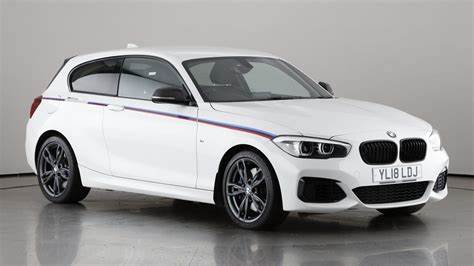
The BMW M140i Championship Edition is a rare and special version of the M140i, created to celebrate BMW’s success in the 2017 British Touring Car Championship (BTCC). Limited to just 30 units, this edition is a true collector’s item.
Key features include:
- A striking white exterior with M Sport decals and “Championship Edition” lettering.
- Carbon fiber door mirror covers and body trim for a sporty touch.
- The same powerful 3.0-liter twin-turbocharged straight-six engine as the standard M140i, delivering 335 bhp and 369 lb-ft of torque.
Common Issues
The BMW M140i is generally well-regarded for its performance and reliability, but like any car, it has some common issues that owners have reported:
- Coolant System Leaks: Some owners have experienced leaks in the cooling system, particularly from components like the water pump, thermostat, or coolant hoses. These leaks can lead to overheating if not addressed promptly.
- High-Pressure Fuel Pump (HPFP) Failure: The HPFP, a critical part of the direct fuel injection system, can fail, causing symptoms like rough idling, loss of power, or difficulty starting the engine.
- Turbocharger Wastegate Rattle: A rattling noise from the turbocharger wastegate is another reported issue. While it doesn’t always affect performance, it can be an annoyance for some drivers.
- Oil Leaks: Over time, oil leaks may develop, particularly around the valve cover gasket or oil filter housing.
- VANOS Solenoid Problems: Issues with the VANOS (variable valve timing) solenoids can lead to reduced engine performance or rough running.
These issues are not universal and often depend on factors like maintenance history and driving conditions. Regular servicing and prompt attention to warning signs can help mitigate these problems.
PCV Failure
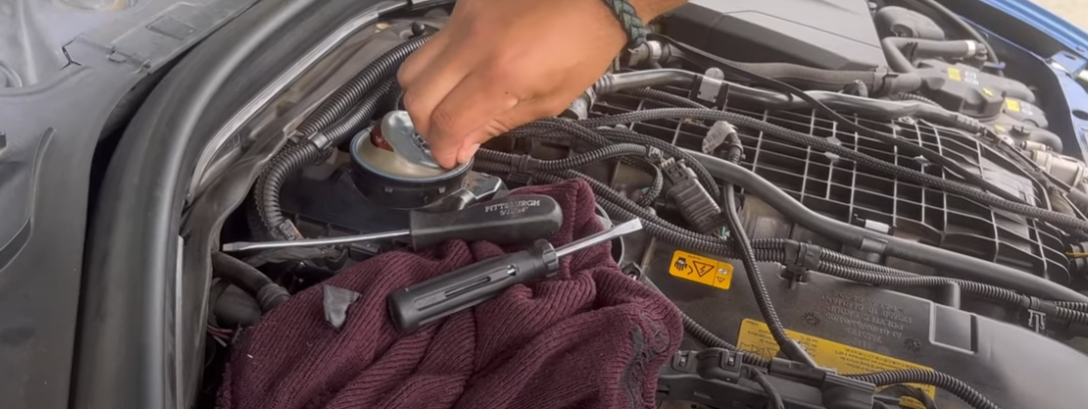
The BMW M140i, like other models equipped with the B58 engine, can experience issues with the Positive Crankcase Ventilation (PCV) valve. The PCV valve is a crucial component that helps regulate and recycle blow-by gases from the engine’s crankcase. When it fails, it can lead to several problems, such as:
- Increased oil consumption.
- Oil leaks from seals or gaskets.
- Build-up of sludge under the hood.
- Black smoke emissions.
- Engine surging or misfires.
These issues can arise due to wear and tear or clogging of the PCV valve or its filter. Regular maintenance, including checking and replacing the PCV valve filter every 60,000 miles, can help prevent such failures.
Replacing the PCV is a relatively quick job. There are some great guides on YouTube on how to do this at home.
The Floaty Front End
The BMW M140i’s front-end floatiness at speed is a common concern among owners, often linked to its suspension setup, steering feel, and tire choices. Here’s a breakdown of the issue and potential remedies:
Causes:
- Electric Power Steering (EPS): The M140i’s EPS system can feel over-assisted, leading to a lack of feedback and precision at higher speeds.
- Suspension Setup: Stock suspension may not provide the firmness needed for high-speed stability, especially on uneven roads.
- Tire Profile: Larger wheels with lower-profile tires can exacerbate the issue by reducing sidewall flexibility.
- Alignment and Steering Rack: Misalignment or issues with the steering rack can contribute to a disconnected feel.
Solutions:
- Suspension Upgrades: Consider installing coilovers or stiffer springs to improve front-end stability.
- Tire Choices: Switching to tires with stiffer sidewalls, like Michelin Pilot Super Sport (PSS), can enhance responsiveness.
- Steering Adjustments: Check the EPS system for calibration issues or software updates.
- Alignment Check: Ensure precise alignment using advanced tools like Hunter machines.
- Chassis Reinforcements: Adding strut braces or subframe inserts can reduce flex and improve handling.
These adjustments can make a noticeable difference, but some owners feel the M140i’s steering characteristics are inherent to its design
Rain Rain Go Away
Driving the BMW M140i in poor weather, especially rain, requires a bit of finesse due to its powerful engine and rear-wheel-drive (RWD) setup. Here’s how to handle it effectively:
Challenges in Poor Weather:
- Traction Issues: The M140i’s RWD can struggle for grip on wet or slippery roads, especially under heavy acceleration.
- Aquaplaning: Wider tires, common on performance cars, are more prone to aquaplaning in standing water.
- Oversteer: The rear end can become lively if you’re too aggressive with the throttle or steering.
Tips for Safe Driving:
- Tires Matter: Invest in high-quality tires like Michelin Pilot Sport 4 (MPS4) or similar, which offer excellent wet-weather grip. Ensure they have adequate tread depth.
- Throttle Control: Be gentle with the accelerator, especially when cornering or pulling away from a stop. Sudden inputs can break traction.
- Use Driving Aids: Keep traction control (DSC) and stability control (DTC) systems engaged. They are designed to help manage power delivery and maintain stability.
- Brake Smoothly: Avoid sudden braking, as it can unsettle the car. Instead, brake progressively and allow the ABS to assist if needed.
- Steering Inputs: Be smooth and deliberate with your steering to avoid unsettling the balance of the car.
- Consider an LSD: If your M140i doesn’t have a limited-slip differential (LSD), adding one can improve traction by distributing power more effectively between the rear wheels.
- Weight Distribution: Avoid abrupt weight shifts by driving smoothly. This helps keep the car balanced and predictable.
- Plan Ahead: Anticipate corners and braking zones earlier than usual to give yourself more time to react.
The M140i is a fantastic car, but its performance-oriented nature means it demands respect in challenging conditions. With the right approach, you can enjoy its capabilities safely, even in the rain.
Buying a categorised / written off BMW M140i
The BMW M140i is a high-performance hatchback, and its sporty nature often attracts enthusiastic drivers who enjoy pushing the car to its limits. Unfortunately, this can sometimes lead to accidents, especially if the car is driven aggressively or in challenging conditions. Additionally, the M140i’s rear-wheel-drive layout, while excellent for dynamic handling, can be less forgiving in poor weather, such as rain or snow, contributing to incidents.
Another factor is the cost of repairs. The M140i features premium components, including its powerful B58 engine and advanced technology. In the event of an accident, the repair costs can be significant, and insurers may deem the car a write-off if the repair expenses exceed a certain percentage of its value. This is particularly true for older models, where the market value may not justify extensive repairs.
Lastly, the popularity of the M140i in the used car market means that some written-off vehicles are repaired and resold, but others are classified as total losses due to structural or safety concerns. If you’re considering purchasing an M140i, it’s essential to check its history and ensure it has been well-maintained or properly repaired if it was previously written off.
When considering a written-off BMW M140i, it’s crucial to approach with caution and conduct thorough checks to ensure you’re making a safe and worthwhile purchase. Here are some key aspects to look out for:
- Structural Damage: Inspect the car for signs of major structural repairs, particularly to the chassis or frame. Written-off vehicles often have undergone significant damage, and improper repairs can compromise safety and handling.
- Engine and Drivetrain: Pay close attention to the condition of the engine and drivetrain components. Ensure there are no lingering issues from the incident that led to the car being written off, such as oil leaks, turbocharger problems, or transmission faults.
- Electrical Systems: Verify that all electrical systems are functioning correctly, including the infotainment system, lighting, and sensors. Electrical faults can be common in vehicles that have been involved in accidents.
- Service History and Documentation: Check the car’s service history and ensure all repairs have been documented. A complete and transparent record can provide insights into the extent of damage and the quality of repairs.
- Alignment and Suspension: Test the car’s alignment and suspension to ensure it drives straight and handles properly. Damage to these systems can affect the car’s performance and safety.
- Insurance Category: Understand the insurance write-off category (e.g., Category S or N in the UK). Category S indicates structural damage, while Category N refers to non-structural issues. This classification can help you assess the severity of the previous damage.
It’s advisable to have a professional mechanic or specialist inspect the vehicle before purchasing.
What are the UK Insurance write-off categories?
In the UK, insurance write-off categories are used to classify vehicles that have been damaged to the extent that repairing them may not be economically viable or safe. These categories help buyers and sellers understand the severity of the damage and whether the vehicle can be repaired and returned to the road. The categories are as follows:
- Category A: Vehicles in this category are deemed beyond repair and must be completely scrapped, including all parts. These vehicles are considered unsafe and cannot be returned to the road under any circumstances.
- Category B: While the body shell of a Category B vehicle must be crushed, some parts may be salvaged and reused. However, the vehicle itself cannot be repaired or driven again.
- Category S (formerly Category C): These vehicles have suffered structural damage but can be repaired and returned to the road, provided the repairs are carried out to a roadworthy standard. Examples of structural damage include issues with the chassis or frame.
- Category N (formerly Category D): Vehicles in this category have non-structural damage, such as cosmetic or electrical issues. They can be repaired and driven again, but the cost of repairs may exceed the vehicle’s market value.
Understanding these categories is essential when considering purchasing a written-off vehicle, as it impacts the car’s safety, value, and insurability.
Clocked Cars
Mileage clocking, or odometer tampering, is a practice where the recorded mileage of a vehicle is reduced to make it appear less used and more appealing to buyers. Unfortunately, this can happen with high-performance cars like the BMW M140i, as lower mileage often translates to higher resale value. Clocking is illegal in many regions, including the UK, but it still occurs due to loopholes and unscrupulous sellers.
To identify if a BMW M140i has been clocked, here are some key steps:
- Check the Service History: Verify that the mileage recorded during each service aligns with the odometer reading. Any discrepancies could indicate tampering.
- Inspect the MOT Records: In the UK, MOT tests record mileage annually. You can check these records online to ensure consistency.
- Examine the Vehicle’s Condition: Look for signs of wear and tear that don’t match the mileage. For example, a car with low mileage should have minimal wear on the pedals, seats, and steering wheel.
- Use Diagnostic Tools: BMW stores mileage data in multiple locations, including the ECU and key fob. A professional diagnostic tool can reveal if these readings match the odometer.
- Conduct a Vehicle History Check: Services like HPI checks can provide a comprehensive history of the car, including mileage records.
If you’re considering purchasing an M140i, it’s essential to be vigilant and consult a trusted mechanic or specialist to ensure the vehicle’s mileage is genuine.
Dealer Vs Private Sale
When buying a BMW M140i, there are key differences between purchasing from a BMW dealer and a private seller, each with its own advantages and considerations.
Buying from a BMW Dealer: Purchasing from a dealer offers peace of mind, as the car is likely to have undergone thorough inspections and come with a warranty. BMW dealers often provide certified pre-owned (CPO) vehicles, which include extended warranties and a detailed service history. Additionally, dealers may offer financing options and after-sales support, making the process more convenient. However, cars from dealers tend to be priced higher than those sold privately.
Buying from a Private Seller: Private sales can be more cost-effective, as sellers often price their cars lower than dealers. However, the buyer assumes more risk, as private sellers may not provide warranties or detailed service records. It’s crucial to conduct a comprehensive inspection, verify the car’s history (e.g., MOT records in the UK), and ensure there are no outstanding finance agreements on the vehicle. Services like HPI checks can help confirm the car’s legitimacy.
What to Look Out For: Regardless of where you buy, check for common issues with the M140i, such as coolant leaks, turbocharger wastegate rattles, and oil leaks. Inspect the car’s condition, service history, and mileage for consistency. If buying privately, consider having a trusted mechanic inspect the car to ensure it’s in good condition.
Be sure to also check iDrive for the service history. It should show the dealer IDs and give an indication if it’s been looked after by a main dealer or at all.
High Insurance Prices
Insurance for the BMW M140i in the UK tends to be high due to several factors. The car’s powerful engine, high performance, and desirability make it a target for theft and accidents, which increases the risk for insurers. Additionally, younger drivers or those with limited no-claims bonuses often face even steeper premiums.
Trackers
To help reduce insurance costs, installing a tracker can be a smart move. Many insurers offer discounts for vehicles equipped with approved tracking systems, as these devices lower the risk of theft and improve recovery rates. Discounts can range from 5% to 20%, depending on the type of tracker and the insurer. Advanced trackers with features like real-time monitoring or remote immobilization tend to offer greater savings.
Ghost Immobiliser
A Ghost Immobiliser is an advanced anti-theft device designed to protect your vehicle from being stolen. Unlike traditional immobilisers, it doesn’t rely on key fobs or radio signals, making it undetectable to thieves. Instead, it uses a unique PIN code that you set, which must be entered via buttons on your car’s dashboard, steering wheel, or other controls before the vehicle can start.
Key Features:
- Stealth Installation: It’s discreetly installed and doesn’t emit signals, making it nearly impossible for thieves to detect or bypass.
- No Key Cloning: Protects against key cloning, hacking, and relay attacks, which are common methods used by modern car thieves.
- Customisable PIN: You can set a unique PIN code, adding an extra layer of security.
- Valet Mode
Other tips to reduce premiums include:
- Parking securely: Keeping the car in a locked garage or secure compound can lower costs.
- Increasing the excess: Opting for a higher voluntary excess can reduce premiums, though it means paying more out-of-pocket in the event of a claim.
- Limiting mileage: Declaring lower annual mileage can result in savings.
- Shopping around: Comparing quotes from different insurers or using brokers can help find better deals.
- Move to a safer area
- Keep your car standard
Tuning / Modifying the BMW M140i
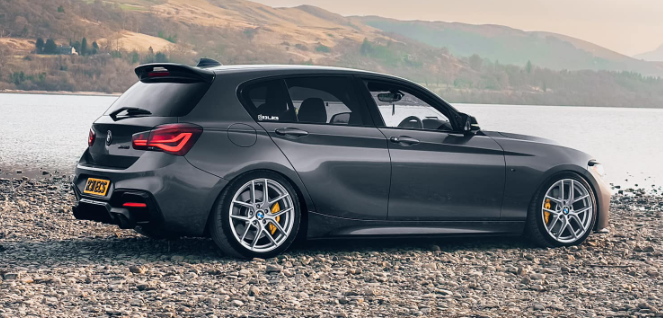
- Intake & Induction Mods
Performance Panel Filters: Upgrading to a cotton or foam panel filter (like BMC or Pipercross) improves airflow while retaining the stock airbox. Open Cone Intake Systems: Systems like the MST, Eventuri, or Ramair setups replace the airbox entirely, offering better induction noise and slightly improved airflow. Turbo Inlet Pipe & Elbow: Upgrading to a wider silicone or aluminum turbo inlet (like VRSF or FTP) reduces restriction and improves turbo spool. - Exhaust & Downpipe
Catless vs. Sports Cat Downpipe: A decat downpipe maximizes power and spool but is not road-legal in the UK, while a 200-cell sports cat balances performance and emissions compliance. Resonator & Backbox Deletes: Removing the resonator or backbox enhances exhaust note but may introduce drone. Full Exhaust Systems: Brands like Milltek, Scorpion, and Akrapovic offer cat-back systems designed to improve flow and sound. - Cooling & Intercooler Upgrades
Larger Intercooler: Wagner, VRSF, and CSF offer intercoolers with more core volume, reducing intake temperatures and preventing heat soak. Oil Cooler Upgrades: While stock cooling is sufficient for most, additional oil cooling helps if tracking or running high-boost setups. - Fueling & HPFP Upgrades
Upgraded HPFP (High-Pressure Fuel Pump): The stock TU HPFP supports ~450-500hp on E30 blends. Those seeking more power can opt for the Dorch Stage 1 or 2 pumps. Port Injection Kits: For power beyond 500hp, port injection adds extra fueling capacity to complement direct injection. - Turbocharger Upgrades
Hybrid Turbos: Pure800 and Littco offer hybrid turbos that retain OEM fitment but significantly increase power output (~550-600hp capable). Single Turbo Conversions: More extreme builds replace the twin-scroll turbo with a large single, requiring custom tuning and supporting mods. - Transmission & Drivetrain
xHP Gearbox Flash: The ZF 8-speed benefits greatly from tuning, improving shift speed, torque capacity, and launch control settings. Upgraded LSD (Limited-Slip Differential): The stock open diff can be replaced with a Quaife or Wavetrac LSD for better traction. Strengthened Driveshafts: Essential for high-power builds or hard launches. - Chassis & Suspension Upgrades
Bilstein B8 + MMR Springs vs. Bilstein B14 Coilovers: A common choice between improved handling while maintaining comfort or full adjustability. Polyurethane Bushings & Strut Braces: Reducing compliance in the suspension increases steering precision and stability. Upgraded Anti-Roll Bars: A stiffer rear ARB helps to reduce understeer and improve turn-in. - Braking System Upgrades
M Performance Brakes vs. Aftermarket Big Brake Kits: Upgrading from stock brakes to either M Performance or brands like AP Racing/Brembo enhances stopping power. Braided Brake Lines & High-Performance Pads: Reducing fade and improving pedal feel with upgrades like Goodridge lines and Ferodo DS2500 pads. - ECU & Tuning Options
MHD Stage 1/2/2+ vs. Custom Tuning: Off-the-shelf maps are great, but custom tuning (F80Paul, Evolve, etc.) can fine-tune the power delivery. Flex Fuel & E85 Tuning: While the UK has limited E85 availability, running ethanol blends with proper tuning can yield large power gains.
Thanks to Jon Daniel from the BMW M140i Owners Club (Facebook) for the above contribution.
ECU Remapping
ECU remapping on the BMW M140i is a popular way to unlock additional performance from its powerful B58 engine. By recalibrating the engine’s software, remapping can increase horsepower, torque, and throttle response, enhancing the car’s overall driving dynamics. For example, a Stage 1 remap typically boosts the M140i’s output from 335 horsepower to around 420 horsepower, with no hardware modifications required.
For those seeking even greater gains, a Stage 2 remap can push the engine’s performance to approximately 460 horsepower, but this requires supporting hardware upgrades such as a high-flow sports catalyst and upgraded air intake system. It’s also suggested that a high-pressure fuel pump would be beneficial to keep the fueling safe. These modifications ensure the engine operates efficiently and reliably under increased power demands.
Remapping also allows for customization, such as adjusting turbo boost levels, refining throttle response, and removing speed limiters. However, it’s important to choose a reputable tuning specialist to ensure the remap is safe and tailored to the car’s specific needs.
Exhaust
BMW exhaust and downpipe modifications are popular upgrades among enthusiasts looking to enhance performance, sound, and efficiency. Here’s an overview of what these modifications entail:
- Exhaust Modifications: Upgrading the exhaust system can improve airflow, reduce backpressure, and enhance the car’s sound. Options include cat-back systems, axle-back systems, and resonator deletes. These modifications can provide a deeper, sportier exhaust note and, in some cases, minor performance gains. M Performance exhaust systems are a popular choice for BMW owners, offering a balance of improved sound and compliance with emissions regulations.
- Downpipe Modifications: The downpipe is a critical component in turbocharged engines, connecting the turbocharger to the rest of the exhaust system. Upgrading to a high-flow catted or catless downpipe reduces restrictions, allowing exhaust gases to flow more freely. This can result in significant performance gains, including increased horsepower and torque, as well as quicker turbo spool. However, catless downpipes may not comply with emissions regulations in some regions, so it’s essential to consider local laws.
Both modifications can be paired with an ECU remap to maximize performance benefits.
Suspension Modifications
Suspension modifications for the BMW M140i are a popular way to enhance its handling, ride quality, and overall driving dynamics. Enthusiasts often explore a variety of upgrades to tailor the car’s suspension to their preferences:
- Lowering Springs: Upgrading to lowering springs, such as those from Eibach or H&R, reduces the car’s ride height, improving its center of gravity and cornering stability. These springs also give the M140i a more aggressive stance.
- Coilover Kits: Coilovers, like those from KW or Bilstein, offer adjustable ride height and damping settings, allowing drivers to fine-tune the suspension for both comfort and performance. They are ideal for those who want a more track-focused setup.
- Anti-Roll Bars: Upgraded anti-roll bars reduce body roll during cornering, enhancing the car’s stability and responsiveness. This modification is particularly beneficial for spirited driving or track use.
- Bushings and Mounts: Replacing stock rubber bushings with polyurethane alternatives improves suspension precision and feedback. Upgraded mounts, such as camber plates, allow for better alignment adjustments.
- Limited-Slip Differential (LSD): While not a direct suspension upgrade, adding an LSD complements suspension modifications by improving traction and cornering performance.
These modifications can transform the M140i’s handling characteristics, making it more engaging and capable.
Should I buy a BMW M140i
The BMW M140i is a fantastic choice if you’re looking for a compact car that blends practicality with thrilling performance. Its powerful 3.0-liter inline-six engine delivers impressive acceleration, dynamic handling, and a refined driving experience, making it one of the standout hot hatches in its class. It also benefits from BMW’s premium design and engineering, offering a comfortable and well-equipped interior alongside its sporty characteristics.
Closest Competition: Here are some cars that directly compete with the BMW M140i and how they stack up:
- Volkswagen Golf R: The Golf R offers all-wheel drive and a turbocharged 2.0-liter engine, delivering 316 horsepower. It’s more forgiving in adverse weather conditions thanks to its AWD system but lacks the rear-wheel-drive character and straight-line power of the M140i.
- Audi S3: Like the Golf R, the S3 comes with all-wheel drive and a 2.0-liter turbocharged engine. Its interior quality is exceptional, and it’s a solid all-rounder, but it doesn’t match the driving engagement or inline-six smoothness of the M140i.
- Mercedes-AMG A35: The A35 features a sporty design and 306 horsepower from a 2.0-liter turbocharged engine. It’s stylish and fun to drive, but its performance and luxury don’t quite rival the M140i’s blend of power and refinement.
- Ford Focus RS (discontinued): The Focus RS delivers incredible driving dynamics and a playful personality, but its ride quality and interior refinement fall short compared to the M140i.
Why Choose the M140i?:
- Unique Rear-Wheel Drive: Unlike most of its competitors, the M140i features rear-wheel drive, providing a more engaging and dynamic driving experience.
- Powerful Inline-Six Engine: The 3.0-liter turbocharged engine offers smooth power delivery, greater torque, and a more exhilarating feel than the smaller engines of its rivals.
- Premium Build Quality: BMW’s attention to detail shines in the M140i’s interior design and material quality, offering a luxurious experience.
- Versatility: Despite its sporty nature, the M140i is practical and efficient, making it suitable for daily driving.
Ultimately, whether you should buy the M140i depends on your priorities. If you love driving and value a mix of practicality and excitement, it’s a compelling choice.
What to pay for a BMW M140i
Resources
If you’re considering buying a BMW M140i, here are some excellent resources to guide you:
- PistonHeads BMW M140i Buying Guide: This guide provides detailed insights into the M140i, including key considerations, reliability records, and comparisons with competitors.
- Baby BMW Forum: A community-driven platform where enthusiasts share advice, tips, and experiences related to buying and owning an M140i.
- Fast Car BMW M140i Buyer’s Guide: A comprehensive guide that highlights the strengths of the M140i and offers practical advice for prospective buyers.
Workshop Manual Download
We’ve been “gifted” a copy of the F20 / F21 workshop manuals for those owners looking for the technical guides for their cars. You can download it using the link below
Facebook Groups
BMW M140i Owners Club – 28.8k Members (April 2025)
There are several BMW M140i Facebook groups where owners and enthusiasts come together to share experiences, modifications, advice, and photos of their cars. For example, the BMW M140 Owners Club UK is a popular group that provides general information and support for M140i owners. Another group, the BMW M140i Owners Club, encourages members to share their modifications, future plans, and ask questions. Additionally, the BMW M135i M140i Official Owners Group is a welcoming community with helpful members who post pictures, questions, and answers.
These resources are packed with valuable information to help you make an informed decision.
Let’s hear from you!
What are your experiences with the BMW M140i? What common faults would you suggest would be buyers beware of? Let us know in the comments below. Your input will help us improve this article and make it one of the most comprehensive buyers guides available online.
YouTube Videos

